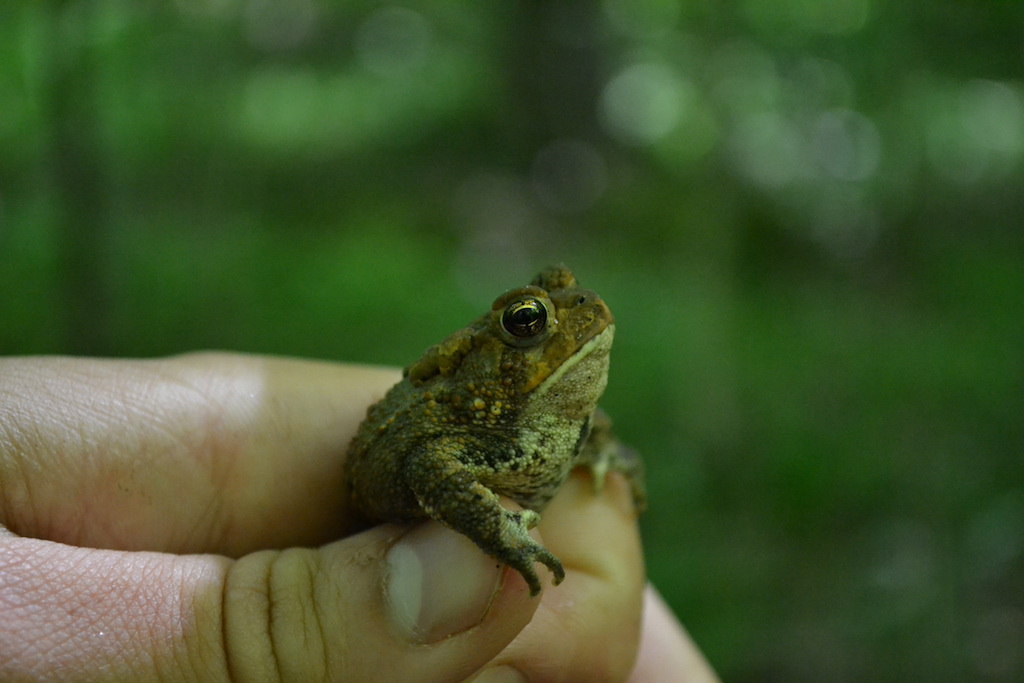
Researchers from VFF’s Colby Hill Ecological Project shared tips and resources for monitoring and encouraging forest wildlife biodiversity during our recent What’s Alive in the Forest? workshop for VFF forest landowners. We’ve compiled them in a two-page handout.
Download a PDF of Tips and Resources for Monitoring and Encouraging Forest Wildlife Biodiversity
Bring on the Wildlife Biodiversity: Tips and Resources for Forest Landowners
Birds:
Monitor
- Connect with your local Audubon chapter.
- Attend birding outings to expand your identification skills.
- Host an Audubon outing on your land.
- Ask if there’s an Audubon member who would be willing to bird with you in your forest.
- Use a Smartphone appfor ID assistance in the forest (particularly songs)
- Merlin (free, produced by the Cornell Lab of Ornithology)
- iBird Pro
- Sibley eGuide to Birds
- Contribute your data to eBird (ebird.org, a world-wide citizen science monitoring project)
- upload the data you collect on bird species in your forest to contribute to this world-wide effort. You generate a new list for each outing, thus showing species presence across time and seasons.

Encourage
- Maintain diverse structure in your forest. Different bird species use different layers of the forest—from forest floor to understory to highest canopy, from shrubby young forest to mature forest—to feed, nest, and hide. Allow the forest to be “messy”, with plenty of downed wood, standing dead trees, wind-felled tip-ups, and so on.
Mammals:
Monitor
- Get to know the patterns of your forestand look closely for signs of change (broken or nipped twigs, excavated holes, wildlife paths, etc)
- Tracking:Cultivate awareness of animal signs (tracks, scat, claw marks, etc)
- Wildlife camera:VFF currently uses the Bushnell Trophy Cam, but we don’t yet have enough of a track record of photos to offer an opinion about its quality.
Encourage
- Same as for birds—allow the forest to express its natural structural diversity.
Amphibians and Reptiles (herps) :
Monitor
- “Walk where no one has walked before.”If you’re with someone who’s walking on the left side of a path, walk on the right—that way you’re more likely to scare up an amphibian or snake.
- Carefully turn overstream rocks and roll back logs to check for amphibians. Replace rocks and logs carefully when you’re done.
- Create cover-boards for woodland salamanders.Jim’s design is four rough-cut white oak boards (or other rot-resistant wood) 6” x 12”, plus two wood spacers (1/4” x 1” x 10”). Lay two boards side by side on the ground in a shady, moist wooded area with a 3/8”gap between them, so that they form a square. Lay the two spacers along the outer edge of 12” length of the two bottom boards. Place the remaining two boards on top of them and at right angles to the bottom boards. You will have a ¼” gap between the two sets of boards. Check for amphibians periodically under both layers of boards. (Jim notes that you can also make your coverboard design much simpler, laying a single board of any size on the ground. Experiment!)
- Create snake-covers.A similar idea to the salamander cover-boards, but made of stone and placed in a sunlit spot, since the stone’s warmth will attract snakes. In Jim’s CHEP monitoring, he uses roofing slate (24” x 14” x 1”), but he has seen people use tin roofing, old tiles, and boards. Jim uses 2 slates per snake-cover, one on top of the other, with a small wooden spacer (roughly ¾” x ¾” x 10”) placed about ¼ of the way in from the outside edge to create a small space of varying height between the slates. Check for snakes periodically by carefully tilting back the upper stone. (Jim notes that he has seen people use other materials for snake covers, including tin, ceramic tile, and wood boards)
- Contribute your data to the Vermont Reptile and Amphibian Atlas, vtherpatlas.org. Jim Andrews runs this state-wide citizen science monitoring project, which collects data on the distribution and abundance of reptiles and amphibians in Vermont.
Encourage
- Create fish-free small ponds for amphibians.The three ponds that Jim monitors for CHEP are all human-made, and they each support a wealth of aquatic life, including wood frogs, spotted salamanders, spring peepers, green frogs, pickerel frogs, and eastern newts. If you want to encourage amphibians, don’t stock your pond with fish. As with forest habitat, allow aquatic habitat to be “messy”—submerged branches make good hiding cover and sites for laying eggs. Ditto for cattails.





